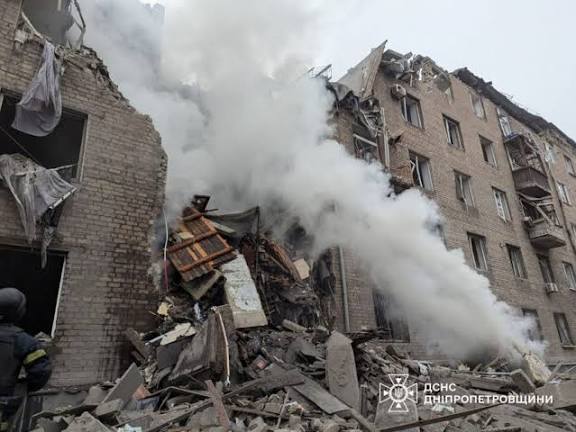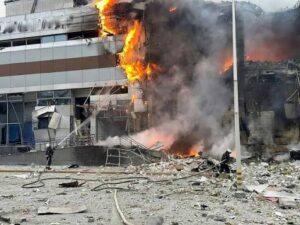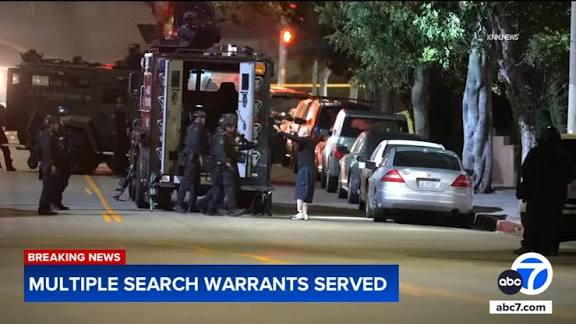Russia’s Drone & Missile Barrage: Civilians Bear the Brunt

Citizens, cities and rural areas are equally articular attacks, drone attacks and ground attacks. Interesting engineering. Today we will discuss about Russia’s Drone & Missile Barrage: Civilians Bear the Brunt
Russia’s Drone & Missile Barrage: Civilians Bear the Brunt
Over the past few years, Russia’s war on Ukraine has increasingly been marked by massive drone and missile barrages. While much of the strategic focus has been on territorial gains, military logistics, and battlefield dynamics, one of the most devastating and persistent consequences has been the toll borne by civilians. Homes destroyed, children killed, services disrupted—these are not side‐effects; they are central to how this conflict is being prosecuted, and central to its human cost.
The Scale and Evolution of the Barrages

Since the full-scale invasion in early 2022, Russia has escalated the frequency, variety, and range of its aerial attacks on Ukraine. The attacks incorporate:
-
Drones, including both commercially available quadcopters converted for military use and purpose-built unmanned aerial vehicles (UAVs), often used to harass, surveil, drop small explosives, or even deliver antipersonnel mines.
-
Glide bombs, cruise missiles, ballistic missiles, and other long-range weaponry. These allow for strikes deep inside Ukrainian territory.
Some of the more shocking recent numbers:
-
On September 20, 2025, Russia launched approximately 580 drones and 40 missiles in one barrage. Despite Ukraine’s air defenses intercepting a large share, civilians were still killed and injured.
-
There have also been nights when over 100 missiles and a similar number of drones struck multiple regions—disrupting power, water, and lives.
These barrages have grown not just in number, but in the diversity of their targets—not only military or infrastructure, but living neighborhoods, hospitals, schools, and other civilian sites. This evolution reflects shifts in strategy, weapon availability, and possibly in intent.
Civilian Casualties: Lives Lost, Homes Destroyed
The impact on civilians is both immediate and multi-layered, including fatalities, injuries, displacement, psychological trauma, and loss of essential services.
-
Loss of life and injuries
Many attacks target residential buildings or occur when civilians are using everyday facilities. For instance:
-
The missile and drone attack in Kyiv region on January 2025 killed three civilians and damaged homes, commercial properties, and cars.
-
In Sumy, the April 2025 airstrike killed 35 people, including children, and injured 129. Many of the victims were civilians gathered for church services when the attack occurred.
-
During a massive aerial attack on August 1, 2025, 31 people, including five children, were killed; over 150 injured after missiles and drones struck Kyiv, destroying residential buildings.
-
-
Destruction of civilian infrastructure
Attackers often hit more than just people. The infrastructure that supports daily life—homes, power plants, hospitals, schools, water systems—suffers extensive damage:
-
The Kherson region has seen grocery stores, ambulances, municipal utilities (water, electricity) severely disrupted by drone attacks. Many residents are cut off from essential services.
-
Energy infrastructure is a frequent target, especially substations associated with rail and transportation, which in turn affect both civilian and military mobility.
-
-
Displacement and daily life disruption
Because these attacks are frequent and unpredictable, many civilians live in constant fear:
-
In Kherson, people avoid leaving home; older people and those who cannot move easily are particularly affected.
-
Travel, commuting, rest become dangerous. Repairs to damaged infrastructure often expose workers to new attacks.
-
Schools, medical services, public administration often shut down or operate under threat. Residents are forced to change routines, and mental stress escalates.
-
-
Psychological and societal trauma
Repeated night-time raids by drones and missiles create an atmosphere of perpetual anxiety. People sleep in shelters, fear going outdoors, and suffer from loss of loved ones, illness without care, and the slow erosion of what makes life stable. Reports indicate that civilians feel exhausted, trapped between staying (and risking death) vs fleeing (and losing homes, community, livelihood).
Legal, Ethical, and Strategic Implications
-
International humanitarian law concerns
According to Human Rights Watch and other observers, some of the drone use appears to violate international humanitarian law. Attacks on clearly civilian objects, disproportionately lethal effects, and use of weapons that cannot discriminate effectively are all red flags.
The use of inexpensive, commercially available drones converted to armed use further complicates accountability, as many of these violate laws related to civilian vs military distinction. -
Strategic intent: terror, disruption, morale
While Russia argues these are military operations aimed at degrading Ukraine’s infrastructure and logistics, many analysts see part of the strategy as psychological warfare: to demoralize civilians, to strain civil and military defenses, and to weaken support for the war. The targeting of energy supplies, transportation, and basic services supports this interpretation.
-
Cost of defense and resilience
As aerial attacks intensify, Ukraine must allocate more resources to air defenses—not just to counter missiles, but to detect and shoot down drones. This draws from military budgets, international aid, and diverts resources from other fronts.
-
Civil protection (shelters, early warning systems, evacuation planning) becomes critical—and costly. Healthcare systems must absorb casualties even as their facilities are directly under threat.
-
Humanitarian fallout
With disruption to water, electricity, healthcare, and basic supply chains, civilian public health and welfare suffer: disease, malnutrition, psychological illness increase. Displacement adds pressure to hosts and shelters. Schools being damaged or destroyed means loss of education; children grow up under trauma. These effects often persist long after bombs fall.
Case Studies
To understand the scale and nature of Russia’s drone and missile attacks, here are a few specific incidents:
-
Kherson: Residents reported drone attacks targeting grocery stores, ambulances, and utilities. Lives disrupted, services cut. Human Rights Watch documented that in Kherson these attacks were part of a widespread strategy.
-
Sumy, April 2025: On a Palm Sunday, Russia’s missiles with cluster munitions struck during a time when civilians were gathered. Casualties very high. Sense of violation compounded by timing and choice of weapons.
-
Kyiv, large-scale barrages: Multiple occasions (e.g. July 2025, Sept 2025) when hundreds of missiles and drones have struck overnight, causing casualties despite Ukraine’s defenses. Many residential neighborhoods hit.
Why Civilians Remain Vulnerable
Several interlinked factors explain why despite air defenses and warnings, Ukrainian civilians continue to suffer heavily.
-
Weapon proliferation and low cost: Drones can be cheap, relatively easy to produce or procure, and still cause damage. This allows repeated barrages without proportionately high cost to the attacker.
-
Dispersal of targets: Attacks are not always concentrated on front-line military targets. Civilian infrastructure, even far from frontlines, becomes vulnerable. Railways, energy grids, residential zones—even smaller towns.
-
Limitations of air defenses: While Ukraine has increasingly effective air defenses and international support, it is logistically and technically challenging to intercept every incoming drone or missile, especially in large swarm attacks and when launched from different directions. Weather, timing (night vs day), and distribution matter.
-
Civil infrastructure was not built for war: Many residential buildings, public services, hospitals, schools weren’t designed to withstand bombardment, or were not prepared for prolonged air raid conditions. Shelters are insufficient in many areas. Maintenance and back-up systems (power, water) fragile. When attacked, fail quickly.
-
Civilian movement & evacuation constraints: Not everyone can leave. Some are elderly, disabled, poor, or otherwise unable to flee. For many, leaving means leaving everything behind. Disrupted transport and infrastructure make escape dangerous or impossible in many cases.
Possible Mitigations and What’s Needed
What can be done, both immediately and in longer term, to reduce civilian suffering in face of these barrages?
-
Strengthened air defense and early warning systems
-
Continued supply of effective anti-missile and anti-drone systems from international partners.
-
Locally adaptable defenses: smaller, mobile systems to counter drones; better radar, optical detection.
-
Early warning, public alert systems so civilians can shelter more reliably.
-
-
Civil protection infrastructure
-
Reinforcing buildings, creating shelters, safe rooms, especially in residential areas and institutions (schools, hospitals).
-
Ensuring water, power, sanitation systems have redundancy and are protected.
-
Pre-positioned medical supplies, warehouses for essentials in less vulnerable locations.
-
-
Humanitarian support and planning
-
Psychological counseling and support, for populations under constant stress.
-
Evacuation plans, especially for vulnerable populations.
-
Reconstruction efforts synchronized with peace and security planning.
-
-
Legal & diplomatic pressure
-
Documentation of attacks, investigations to determine whether war crimes or violations of international law have been committed.
-
Use of international forums and treaties to press for safeguarding civilians.
-
Sanctions and penalties targeted at those supplying weapons, if those weapons are used to violate international human rights or humanitarian law.
-
-
Strategic communication and awareness
-
More awareness campaigns about risks, how to respond to air raids, what protective measures civilians can take.
-
Transparency from all sides about bases or military infrastructure near civilian areas (though military necessity complicates this).
-
Global media attention and consistent reporting to maintain pressure and support.
-
The Human Face: Stories Behind the Numbers
Numbers tell part of the story; the often untold are individual lives, individual suffering.
-
In Kherson, people avoid leaving home; shops are closed; ambulances hesitate. Those who remain are usually older, poorer, those who cannot flee. The psychological toll is immense.
-
In Kyiv, a family might be awakened in the dead of night by air raid sirens, only to find their home damaged or destroyed by explosive debris. Children lose friends, parents worry constantly. Windows shattered, power lost, heat gone in winter.
-
In Sumy, people gathering for church — seeking solace, community — find themselves in the path of violence. Those who survive carry the scars, physical and emotional.
These are not isolated incidents; they are everyday realities for hundreds of thousands.
Conclusion: Civilians Are Not Collateral Once They Are the Target
If there is a through-line in the evidence and stories, it is this: while Russia’s drone and missile barrages are part of its military strategy, the civilian burden is not incidental. It is intentional or, at minimum, accepted as part of that strategy. Destroying infrastructure, spreading fear, weakening community resilience—these align not just with military gains but with coercive objectives.
For the international community, the obligation is clear: civilians must be protected from the worst impacts of modern aerial warfare. That means stronger air and civil defense, robust humanitarian response, and, importantly, accountability. The longer such attacks go unchecked, the more lives lost, the deeper the trauma, and the harder the rebuilding.
How useful was this post?
Click on a star to rate it!
Average rating 0 / 5. Vote count: 0
No votes so far! Be the first to rate this post.
About the Author
usa5911.com
Administrator
Hi, I’m Gurdeep Singh, a professional content writer from India with over 3 years of experience in the field. I specialize in covering U.S. politics, delivering timely and engaging content tailored specifically for an American audience. Along with my dedicated team, we track and report on all the latest political trends, news, and in-depth analysis shaping the United States today. Our goal is to provide clear, factual, and compelling content that keeps readers informed and engaged with the ever-changing political landscape.




